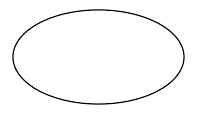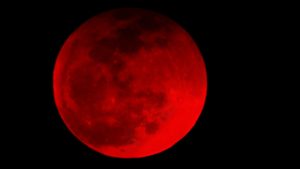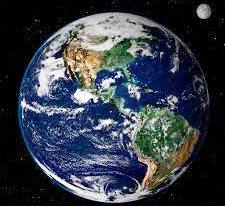The orbit of the Earth around the Sun is elliptical, not circular, in shape.
If it were circular and the Sun is at the centre, the distance from the Earth to the Sun will never change.

But, it is elliptical or “potato-shaped,” so the Earth’s distance from the Sun varies.
Therefore, the Earth will be farther from the Sun at some time and nearer at another time.
The Sun is at the centre of our Solar System and the Earth (with all the other planets in their elliptical orbits) is going round it.

When the Earth is farther from the Sun, it is said to be at the Aphelion, and at the Perihelion, when it is nearer.
At the Aphelion, the Earth is 94.51 million miles (152.1 million kilometres) from the Sun.
The Earth reaches this position (Aphelion) on early July.
It was at Perihelion in early January, and was 91.4 million miles (147.1 million kilometres) away from the Sun.
The average distance of the Earth from the Sun is 93 million miles.
The Earth, at its Aphelion, is about 3 million miles (4.8 million km) farther from the Sun than when it was at the Perihelion.
This distance is small, so the difference in the amount of the energy of the Sun reaching the Earth, called the Solar Constant, does not vary significantly.
The Earth’s Solar Constant is about 1,367 Watts per square metre. This varies by only 3.5% in a year.
There is, therefore, no significant difference in the Solar Constant, as one will expect, between when the Earth is at the Aphelion and when it is at the Perihelion due to its eccentricity.
The Earth’s axis, not it’s distance from the Sun, is what causes the difference in weather.
When the Earth tilts by 23.5 degrees in it’s axis, the Sun’s beam hits the Northern Hemisphere directly and causes summer, and winter in the Southern Hemisphere as it hits it less, and vice versa.
A viral social media message that the entire Earth will be colder from 5 July to August, due to Aphelion Phenomenon (because it is farther from the Sun), with a rise in cold-induced diseases is, therefore, not correct.
There has also been a heavy rain cloud over West Africa, through Central and East Africa, from the Indian Ocean, bringing along heavy rains.
Meteorologists say it will move on to the Atlantic Ocean in about two weeks time, before mid-August.
This has nothing to do with the Aphelion Phenomenon.











